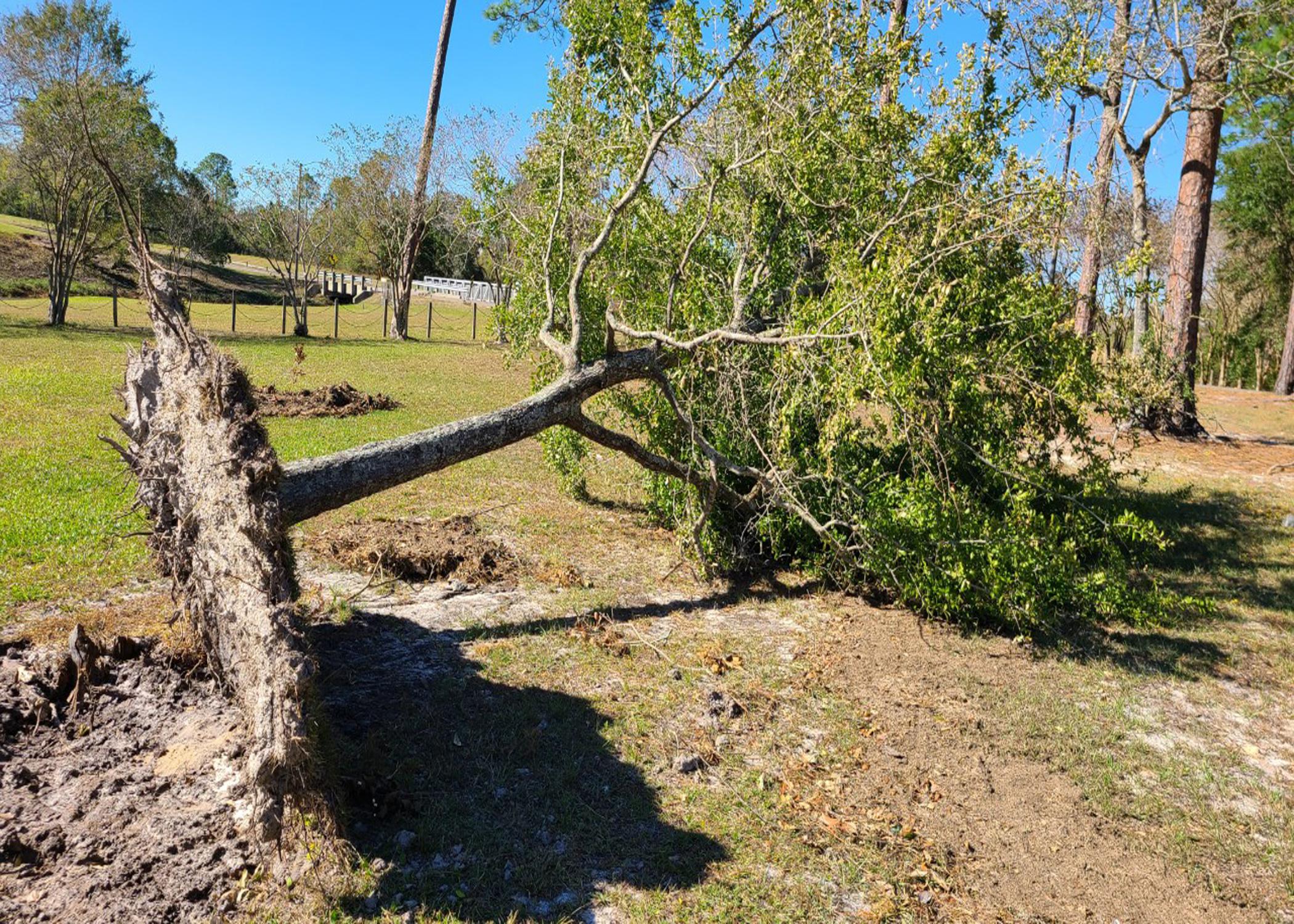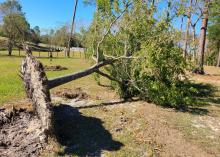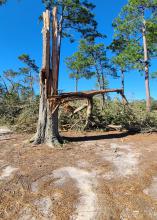Information Possibly Outdated
The information presented on this page was originally released on November 2, 2020. It may not be outdated, but please search our site for more current information. If you plan to quote or reference this information in a publication, please check with the Extension specialist or author before proceeding.
Get professional help for big storm damage
I had planned to write again this week about more great cool-season color options, but we had a landscape and garden crasher named Hurricane Zeta make a mess on the Gulf coast.
This storm surprised most folks with its intensity and property damage. It also did a lot -- and I do mean a lot -- of damage to trees that resulted in widespread power outages. My family and neighbors were lucky that our power was off for only 48 hours.
As Zeta was making landfall and creating havoc across coastal Mississippi, we watched the transformer feeding power to our neighborhood burn out, sending sparks flying in what looked like a Fourth of July fireworks display.
Many areas are still without power as I write this Southern Gardening column.
The linemen for the power companies have been busy this entire storm season all across the Gulf of Mexico region. But they can’t do their jobs until the downed trees are cleared, and this is not a job for the homeowner.
With cleanup on the minds of so many people, I want to go back and share again some advice from a column I wrote at the beginning of the 2020 storm season. I want everyone to know how dangerous downed trees can be for you and me.
It’s important to remember damaged trees, especially large trees like our beloved live oaks, can be extremely dangerous for the homeowner to attempt to repair. Home gardeners should never try to repair or remove trees, regardless of how big a chainsaw they have.
I can’t emphasize enough that removing large tree limbs is dangerous work.
You should hire a certified arborist for the job. These trained professionals also can treat and repair other types of damage that can save many trees. There are certified arborists across Mississippi. Contact your county Extension office if you need help making those connections.
While big jobs should be left to the professionals, homeowners can attempt small tree repairs.
Typical damage scenarios include fallen and uprooted trees, broken and torn limbs, wounds, split branches and exposed roots. In many cases, the damage is so severe that the tree will have to be removed and replaced.
Properly treating limb damage is important for the overall health of the tree.
Small branches and limbs, which typically are 1-inch or less in diameter, can be removed with a single cut. Always look for the branch collar, a slightly raised area around the point where the branch is connected to the tree trunk. Limb removal at this point will help the tree heal itself.
Watch a demonstration of pruning small landscape trees in this Southern Gardening TV segment from several years ago: http://extension.msstate.edu/southern-gardening/video/2015/pruning-demystified.
After pruning a branch, never cover the cut surface to protect it.
Many homeowners believe that trees heal in the same way as a cut on our finger, which we cover with bandage. In the past before we knew better, we covered tree wounds with various materials like paint, caulk and cement, but this only trapped disease organisms.
Instead, trim damaged, jagged branches back to an even surface, which will allow the tree to completely seal the damaged area off from the rest of the tree. You can use a saw or wood chisel for this task.
To remove large, heavy limbs greater than 1-inch in diameter, use the drop cut method (research the 1-2-3 technique to learn more) to avoid ripping bark and wood. Never cut flush with the trunk or branch from which you are pruning.
Cut out broken, diseased and malformed branches, and give the tree a desirable shape. Avoid severe pruning, and trim a damaged tree just enough to balance any loss of roots.
Continue to care for all trees after repairs are completed. Check soil moisture, and consider applying mulch to conserve moisture during the dry fall months.




